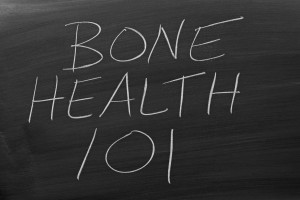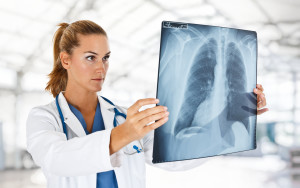By Iris Farrou
09 Feb, 2021
Menstruation
Best gyns in Buffalo, Best OB practices in Buffalo, Best OBGYN Groups in Buffalo, Buffalo OB-GYN, Buffalo OBGYN, Chouchani MD, skincare, WNY OB-GYN, WNY Ob-gyn doctors, WNY OBGYN, women's health
 It’s not a secret that menstrual cycles causes all sorts of changes to our bodies, our moods, our hair, etc, but our cycle also brings about changes to our skin. You may be surprised to find out it’s not only during menstruation and the frequent breakout that accompanies it that our hormones are at work. In fact, estrogen, progesterone, and testosterone work hard throughout our menstrual cycle to ensure that they are causing changes to our skin. You can check the best laser hair removal in Las Vegas, NV and know where to go to get a glow up.
It’s not a secret that menstrual cycles causes all sorts of changes to our bodies, our moods, our hair, etc, but our cycle also brings about changes to our skin. You may be surprised to find out it’s not only during menstruation and the frequent breakout that accompanies it that our hormones are at work. In fact, estrogen, progesterone, and testosterone work hard throughout our menstrual cycle to ensure that they are causing changes to our skin. You can check the best laser hair removal in Las Vegas, NV and know where to go to get a glow up.
Shark Week
During our periods, and especially on the first day, all our hormones are at their lowest levels. You may have noticed not only the breakouts but also the lack of moisture—this is due to the low sebum production. It is ideal to consume more water to help your skin retain hydration, and to use a moisturizer or serum high in hyaluronic acid. Increased pain sensitivity is also noticed during that time, so try to avoid procedures that would be painful (like waxing). For the Top 7 Benefits of CoolSculpting, and the way it benefits the skin, it is best to check out this link!
Venus Week
After menstruation ends, our skin begins the process of producing estrogen anew. You have probably noticed that in the days after your period your skin glows more and may feel more youthful or plump. The increased levels of estrogen mean that collagen, elastin, and hyaluronic acid are created, leading to stronger elastic cells. If you want to help your skin with this turnover process, you can consider exfoliating. It is generally suggested that you use gentle and natural exfoliants and lessen the amount of makeup so that you give your skin a chance to breathe. Lowering your sugar and carb intake during this week will also help your skin glow even more!
Minerva Phase
After ovulation, female bodies pump up the levels of progesterone—the hormone responsible for “watching after” potential pregnancies. This surge leads to more sebum production, swelling of your skin and compression of pores. This is the phase when more oil is likely to be trapped in our skin pores, thus causing the dreaded breakout to commence. You may also feel more bloated during this time, as our metabolism tends to slow down. As far as your skincare routine goes in this phase, you want to ensure that you are using products that help with the excess oil: cleanse with a gentle toner, add a clay mask to your routine, or use spot-on acne treatment for potential blemishes.
Takeaway
Being cognizant of the hormonal changes during your menstrual cycle can certainly help you take better care of your skin, and possibly lessen the personal guilt that comes with blemishes or dry skin! However, there may always be other conditions that cause skin problems so always check with your doctor before drastically changing your skincare routine, or if you are on any medications that might affect it.
More
 Any expectant mother’s goal is to deliver a safe and healthy baby, and the work to achieve that begins as soon as a woman realizes she is pregnant. From prenatal vitamins to diet changes, and more that are discussed here, women employ a variety of methods to boost their immune system during pregnancy. Did you know that your body actually lowers its immune defenses upon pregnancy to allow the fetus to grown? As a result, of course, your immune system becomes weaker and needs some extra support. This is especially important now, when COVID-19 poses an extra threat to individuals with a weakened immune system.
Any expectant mother’s goal is to deliver a safe and healthy baby, and the work to achieve that begins as soon as a woman realizes she is pregnant. From prenatal vitamins to diet changes, and more that are discussed here, women employ a variety of methods to boost their immune system during pregnancy. Did you know that your body actually lowers its immune defenses upon pregnancy to allow the fetus to grown? As a result, of course, your immune system becomes weaker and needs some extra support. This is especially important now, when COVID-19 poses an extra threat to individuals with a weakened immune system.
Immune Support Techniques
- Prenatal Vitamins: During pregnancy, not only do you have a weakened immune system, but you also need to be careful with your diet. This can often make it difficult to have a healthy intake of necessary nutrients, so taking prenatal vitamins recommended by your doctor is a good way to ensure you are boosting your immune system and your overall health. In fact, it’s ideal to get on prenatal vitamins when you start trying to conceive.
- Hydration: Staying hydrated is a good way to avoid illness and to help alleviate symptoms of it if you get sick. Our bodies need water, so extra intake of water ensures that your immune system runs effectively. Though there can be other sources, avoid drinks high in sugar or caffeinated beverages.
- Diet: A diet high in fruits, vegetables, and proteins has the ability to naturally boost your immune system and help you get better if you get sick. Avoid foods with high sugar percentages and other carbohydrates. This way, you are ensuring you are consuming the necessary vitamins and minerals.
- Rest: Though self-explanatory, a good night’s sleep goes a long way in boosting your immune system and in making sure your body is getting enough energy to stay healthy and to sustain a growing baby.
- Humidifier: Not only can humidifiers help alleviate cold symptoms, they also keep the air pleasantly moist and generally cleaner.
Pregnancy and COVID-19
Because pregnancy can cause a lower immune system, it follows that the risk of contracting COVID-19 is higher. At this moment, the World Health Organization does not specify different protection measures against COVID-19 for pregnant women, but it does caution to the higher risk the virus poses to pregnant women.
As is recommended:
- Wash your hands frequently with soap and water or with an alcohol-based hand rub.
- Keep recommended space between yourself and others and wear a fabric mask.
- Avoid crowded spaces.
- Avoid touching your eyes, nose, and mouth.
- Practice respiratory hygiene by covering your mouth and nose with your elbow should you need to sneeze.
More
By Iris Farrou
06 Jan, 2021
Menstruation
Best gyns in Buffalo, Best OB practices in Buffalo, Best OBGYN Groups in Buffalo, Buffalo OB-GYN, Buffalo OBGYN, Chouchani MD, missed period, Normal menstruation cycle, WNY OB-GYN, WNY OBGYN

Irregular or missed periods happen for many reasons besides pregnancy. While most women have a period every 28 days, a healthy cycle can range from 21 to 35 days. So, it’s helpful to keep in mind that normal is relative to each person. There are many other reasons that can cause irregular or missed periods.
Most people have some amount of stress in their daily lives—let’s face it, in a pandemic, who isn’t experiencing some stress? Even with tactics to manage stress (working out, meditation, therapy, healthy eating, etc.), stress can cause physical symptoms, including altering your period. Significant stress can disrupt your hormonal balance, which may lead to delayed, irregular, heavy, or even missed periods.
- Weight loss/Too much exercise
While losing weight is usually good, losing weight too quickly can also affect your hormones. The loss of a hormone in fatty tissue called leptin can lead to the loss of other hormones, including estrogen, which may cause your period to be irregular.
- Low body weight/Eating disorders
Women with eating disorders, such as anorexia nervosa or bulimia, may also experience missed or irregular periods. In fact, women may stop ovulating if they weigh 10% below the normal range for their height. Gaining weight usually triggers the body to return to normal ovulation, but eating disorders are serious. Seeking medical help is imperative.
- Polycystic ovary syndrome (PCOS)
Affecting about 5% to 10% of women, PCOS is a medical condition caused by an imbalance of reproductive hormones. With an imbalance of estrogen, your period could come more or less frequently than normal.
Going on or off birth control may affect your cycle right away or even months later. Birth control pills contain hormones, estrogen and progestin, which stop your ovaries from releasing eggs. In fact, low-estrogen birth control pills, IUDs, and shots can even trigger a light or non-existent period. It may take up to three months for a period to return to normal after a women goes off birth control.
In addition to causing weight gain or weight loss, thyroid disorders can affect hormones, leading to irregular or missed periods. The thyroid regulates the body’s metabolism, which can alter hormone levels.
If you experience an irregular period with other symptoms (fever, severe pain, unusually heavy bleeding, etc.), you should contact your doctor right away. Otherwise, keeping a log of your period can help your doctor diagnose the issue.
More
By Iris Farrou
30 Dec, 2020
Pregnancy
Best gyns in Buffalo, Best OB practices in Buffalo, Best OBGYN Groups in Buffalo, Buffalo OBGYN, Chouchani MD, Healthy pregnancy, WNY OB-GYN, WNY Ob-gyn doctors, WNY OBGYN, women's health
 There comes a time at every pregnancy when the delivery of the baby becomes the issue at hand; many mothers have a choice on whether to go through a natural birth—also referred to as vaginal birth—or request a Caesarian section, most commonly known as C-section. Sometimes a C-section is necessary, especially in cases of medical concerns for the health of the baby or the mother, but when faced with the option it is a wise idea to be informed of the differences between the two methods of delivery, as well as their respective risks and complications.
There comes a time at every pregnancy when the delivery of the baby becomes the issue at hand; many mothers have a choice on whether to go through a natural birth—also referred to as vaginal birth—or request a Caesarian section, most commonly known as C-section. Sometimes a C-section is necessary, especially in cases of medical concerns for the health of the baby or the mother, but when faced with the option it is a wise idea to be informed of the differences between the two methods of delivery, as well as their respective risks and complications.
Overview
C-sections are a surgical procedure to deliver the newborn, and it takes place either when requested by the mother in lieu of natural birth, or when medical conditions make it necessary. Sometimes a C-section is pre-planned, while other times it may become necessary during labor. They are not as common as natural births, but the following conditions may make a C-section necessary for the safety of both the mother and the baby:
- General health medical concerns for the newborn
- Delivery of more than one baby
- Maternal infections or conditions, such as diabetes
- Problems with the placenta
- Delivery of a larger baby
- A labor that is not progressing in a timely manner, making it unsafe to continue naturally
A natural birth is a vaginal delivery, and it may take place with or without medical assistance for the pain. Natural births usually require a shorter hospital stay and have a faster recovery period. If the mother chooses to have a medical intervention to assist with a natural birth, this may be one of the following:
- Using Pitocin to induce labor
- An incision to help with the delivery of the baby without tearing the skin
- Artificially breaking the water, which would mean a rupture of the amniotic membrane
- A vacuum extraction
Procedure and Healing
Caesarean Delivery
In the case of a Caesarean section, the surgical procedure in general takes about 45 minutes. An incision is made through your abdomen and uterus to remove the baby, usually in the lower part of your uterus. As it is an operation, mothers may be given general anesthesia or an epidural block, where you will be awake during the procedure but not feel the lower part of your body.
The doctor cuts the umbilical cord, removes the placenta and closes the incision while the nurses may need to check the baby and clear their airway before they return it to the mother. Unlike natural birth, it may be a few minutes before the mother is united with her baby after a C-section.
As it is a surgery, recovering from a C-section will be similar to that of any kind of operation. There is a two to four day required stay at the hospital, and pain is to be expected when moving around or getting in and out of bed. The scar from the procedure may be itchy or painful in the first few weeks, like with any surgical scar, and cramps or discharge for about four to six weeks are natural.
Vaginal Delivery
A vaginal delivery happens in the hospital or a birthing center, and sometimes at home. In some cases, mothers opt for an epidural to numb the pain. There are three stages to this procedure: early, active, and transitional. Periodically, your cervix will be measured to determine whether you are fully dilated.
A full dilation is when the cervix is at 10 cm, when it is time to push. As the baby moves down the birth canal, the medical team assists with the delivery and uniting the newborn with the mother immediately. While the baby may be out, more contractions to extract the placenta are expected. Unlike a C-section, natural delivery has no specific timeframe and may take hours.
Takeaway
When the time comes to consider the safest option for you and your baby, always consult with your medical professional or your doctor. The safest choice depends on your medical history.
More
 According to the National Osteoporosis Foundation (NOF), approximately 8 million women in the United States have osteoporosis, a disease that can cause bones to break with something as unavoidable as a sneeze. All women should be aware of the bone health risks they face over age 50. As women age, and particularly during the 5 to 7 years following menopause, they can lose up to 20 percent of their bone density due to decreasing estrogen levels, making their bones more fragile, and putting them at greater risk of injury. Read on to learn about the bone health risks women face after age 50, and what you can do to protect your bones at age 50, and well into the future.
According to the National Osteoporosis Foundation (NOF), approximately 8 million women in the United States have osteoporosis, a disease that can cause bones to break with something as unavoidable as a sneeze. All women should be aware of the bone health risks they face over age 50. As women age, and particularly during the 5 to 7 years following menopause, they can lose up to 20 percent of their bone density due to decreasing estrogen levels, making their bones more fragile, and putting them at greater risk of injury. Read on to learn about the bone health risks women face after age 50, and what you can do to protect your bones at age 50, and well into the future.
Bone Health Risk Factors and Your Healthy Bone Protection Plan
It’s never too late to make the types of healthy lifestyle changes needed to protect your bone health. Follow these tips below to mitigate the chances of developing osteoporosis or other bone health issues as you age.
- Obtain a bone density test from your doctor to assess your current bone health. All women should receive a bone density test during menopause, or earlier, depending on the presence of certain health factors, to determine their risk of bone health complications.
- Consume plenty of calcium. 99 percent of the calcium your body needs is stored in your bones. Women over 50 need about 1,200 milligrams of calcium per day to maintain healthy bones.
- Consume plenty of vitamin D. Just like calcium, vitamin D is essential to maintaining healthy bones as it helps to aid in calcium absorption. Without enough vitamin D, women may lose up to 4 percent of their skeletal mass every year. To maintain healthy vitamin D levels, seek out fortified dairy products, leafy greens, and natural sunlight.
- Eat more fresh vegetables and fruits. In addition to vitamin D, fruits and vegetables offer high levels of other nutrients that are key for bone health, such as vitamin K, vitamin C, potassium, magnesium, and several B vitamins.
- Add supplements as needed. Talk to your doctor about supplementing your diet to achieve the necessary vitamins and minerals. Women ages 19 to 50 need about 1,000 milligrams of calcium and 600 international units (IUs) of vitamin D per day. After menopause, or around age 50, women need about 1,200 milligrams of calcium a day, and over age 70, women need about 800 IUs of vitamin D.
- Stay active. Throughout your life, to build and maintain healthy bones, stay active with weight-bearing exercises and activities that are conducted standing up, such as running, walking, aerobics, and dancing. At least 30 minutes of activity most days is optimal for bone health.
- Maintain a healthy weight. Women who are underweight are at a higher risk of having weaker bones, putting them at a greater risk of breakage.
- Reduce caffeine. Caffeine can cause your body to eliminate calcium more quickly. Reducing your consumption of caffeinated coffee, tea, soda, and caffeinated energy drinks, mitigates these effects.
- Quit smoking. As if you didn’t need another reason to quit smoking, tobacco use is the number one cause of bone loss and bone fractures in women over age 40.
- Moderate alcohol consumption. Women who drank alcohol heavily during their body’s formative teenage years may suffer from irreversible skeletal damage and be at a greater risk of developing osteoporosis as an adult. On the other hand, moderate alcohol consumption, such as a glass of wine per day in adulthood, may help to protect bones. In sum, if you’re going to drink alcohol, simply drink moderately and don’t overindulge—at any age.
For more information about maintaining optimal bone health, or to schedule a bone density test, talk to your doctor. He or she will help you understand your unique risk factors, and the lifestyle changes you can make now for healthier bones in your future.
Chouchani, Sayegh and Robinson MD is a top OB-Gyn practice located in Western New York. We are currently accepting new patients. Give us a call today to schedule your first visit. We look forward to meeting you.
More
What does your stress feel like? Is it a weight on your shoulders? A nervousness in your gut? A pounding in your head? What causes these feelings of stress? Work deadlines? The busy schedule that comes with being a mom? The pressure to make everyone around you happy and comfortable?
Believe it or not, you can reduce your stress levels, no matter what is causing them, and mitigate the stress symptoms that are bringing you down. Read on for nine mood busting tips that will help you take control of your mind, body, and soul, control your stress, and carry on with confidence.
- Deep Breathing. Breathing exercises are one of the most effective ways of learning to quiet your mind, calm your racing heart, and lower anxiety levels. When you feel your stress levels escalating, take a five-minute break and focus on your breathing. Place your hand on your belly, and slowly inhale through your nose and then exhale through your mouth, feeling your breath move from your abdomen to the top of your head. This simple exercise can help you learn to control your anxiety levels and reduce feelings of stress.
- Meditate. Meditation has been proven to help ease anxiety and improve your mood. Even a few minutes per day of quiet, inward reflection and focused breathing can help train your brain to better manage stressful moments when anxiety flares.
- Exercise Regularly. A regular fitness routine, especially one that involves cardio or yoga, can help you reduce stress. It may seem like the last thing you have the energy to do after a stressful day is haul yourself to the gym, but in reality, a quick sweat session can reduce stress, release tension, and help calm your nerves.
- Maintain a Healthy Diet. Well-nourished bodies are better able to cope with stress. Your diet has a profound impact of your mental and emotional health. If you smoke, regularly consume alcohol or illicit drugs, over-consume sugar, and/or drink caffeine, consider cutting back on these stress-boosting diet factors.
- Rely on Your Social Network. We don’t necessarily mean Facebook. When times get tough, reach out to the family and friends in your life who you can rely on for emotional support. Unburden your worries on a sympathetic ear. Talking through your problems can help you see solutions to your stresses and find your internal calm. Face-to-face support is always better and encourages you to get out, get moving, and enjoy a change of scenery.
- Stick to a Regular Sleep Schedule. Sleep deprivation can leave you feeling agitated, restless, and stressed the next day. Make sure you get enough sleep—whatever the right number of hours is for you—to allow you to wake up feeling refreshed, comfortable, and ready to take on the day.
- Find the Humor. The act of laughing helps your body fight stress and is an inexpensive, and effortless way to reduce stress. Put on your favorite comedy or get together for a girls’ night out. What’s most important is that you give your stress somewhere to go by emitting it as laughter.
- Sing and Dance. Music can have a powerful effect on our emotions. Crank up your favorite tunes and sing, or dance. Movement and song can help release tension, give you a reason to smile, and help you focus on less emotionally strenuous factors in your life. If you prefer soothing music to upbeat music, consider a playlist of classical tunes, or ocean sounds. Listen to it while you relax quietly, focusing on your breathing and heart rate.
- Manage Your Time. One of the biggest stress factors that many people face is an overburdened schedule. Remember that it’s okay to say no to requests and invitations. Rather than packing each and every day full of work, volunteer shifts, social engagements, and favors to others, make sure each day includes a period of time that is just for you to ensure self-care and a daily moment of stress-free mental and physical rest.
Remember, your mood can be controlled by you and the decisions that you make to choose a healthy life. Don’t feel overwhelmed if you’re wondering where to start. Choose just one of these mood-busters, and then add more to your daily routine one at a time until you feel you have taken control of your stress factors. Remember, you can always talk to your doctor. He or she can give you advice for how to further manage the stress factors in your life so you can be the best version of you for your family, your friends, and yourself.
More
 Dr. Gabriel Chouchani has made the difficult decision to retire from private practice as of May 15, 2015. He is an expert in the field of obstetrics and gynecology and will certainly be missed by both his staff and many dedicated patients. He plans to relax, travel and visit his children and grandchildren. We wish him the best of luck in all his future endeavors.
Dr. Gabriel Chouchani has made the difficult decision to retire from private practice as of May 15, 2015. He is an expert in the field of obstetrics and gynecology and will certainly be missed by both his staff and many dedicated patients. He plans to relax, travel and visit his children and grandchildren. We wish him the best of luck in all his future endeavors.
We would like to welcome our new Nurse Practitioner, Jenna Goldsmith, who will start seeing patients at all three of our locations beginning October 1, 2015. Jenna studied at State University of New York at Buffalo and Graduated in May of 2006 as a Nurse. She received her Board Certification as a Nurse Practitioner in Women’s Health in 2008 and has been actively practicing in gynecology, obstetrics and women’s health care. She comes with much experience and is a wonderful addition to our Practice!
Call 716-633-6363 today to schedule an appointment with her at one of our three locations.
More
 Lung Cancer is The Number One Cancer Killer of Women
Lung Cancer is The Number One Cancer Killer of Women
Every year, cancer claims the lives of over a quarter of a million women. Of all types of cancer, lung cancer is the number one killer of women, having surpassed breast cancer in 1987. Women of all ages should familiarize themselves with the causes and risk factors of lung cancer. With proper education, routine screenings, and a healthy lifestyle, women can reduce their risk of falling victim this deadly disease.
According to The American Lung Association, the rate of new lung cancer cases over the past 37 years has dropped 28 percent for men, but has risen 98 percent for women. Smoking contributes to 80 percent of lung cancer deaths in women. Cigarette smoke specifically causes the greatest lung cancer risk, and though the risk is not as high, pipe and cigar smoke exposure can also increase the risk of lung cancer. Women who smoke are 13 times more likely to develop lung cancer compared to women who have never smoked, with the risk of lung cancer increasing with every cigarette smoked over time.
There is a misconception that all lung-cancer cases are the result of smoking, but in reality one in five women diagnosed with lung cancer has never smoked. However, one of the greatest risk factors of lung cancer for non-smokers is exposure to second-hand smoke. Non-smokers have a 20-30 percent greater chance of developing lung cancer if they are exposed to secondhand smoke at home or work. Still, there are other non-tobacco related factors that can increase the risk of developing lung cancer.
Studies point to genetics, the presence of certain lung diseases such as chronic obstructive pulmonary disease (COPD), environmental factors such as air pollution, and exposure to hazardous materials such as radon, uranium, arsenic, nickel and chemicals like asbestos, as non-tobacco risk factors for developing lung cancer. Regardless of whether they smoke, women should know the signs of lung cancer and should make an appointment for a screening if they suspect their symptoms may be indicative of a serious condition. Lung cancer symptoms may include coughing, wheezing, shortness of breath, and bloody mucus.
The most important step that a woman can take to reduce her risk of lung cancer is to stop smoking. Once a woman has stopped smoking, her risk of developing lung cancer decreases annually as normal lung cells grow and replace damaged cells. Approximately 15 years after quitting, a woman’s risk of developing lung cancer will more closely mirror that of a life-long non-smoker. For those who are non-smokers, but are exposed to tobacco smoke from a family member or from a work environment, minimizing exposure to second hand smoke can help mitigate the risk of contracting the disease. If you think that your home or work environment may be exposing you to asbestos or radon gas, have your environment tested right away.
Living smoke-free, and maintaining a safe home and work environment free from hazardous materials, and knowing the signs and symptoms of the disease, are important steps to staying cancer-free. With proper preventive measures and early detection, women can reduce their risk of lung and other types of cancer.
At Western New York OBGYN we are committed to your health and well-being. If you are looking for a top OBGYN practice and live in the Buffalo area, give us a call, we are accepting new patients.
More
 Endometriosis is a common health problem in women and girls. In fact, this painful, chronic disease affects at least 6.3 million women and girls in the United States, 1 million in Canada, and millions more worldwide. Endometriosis can occur in any teen or woman who has menstrual periods.
Endometriosis is a common health problem in women and girls. In fact, this painful, chronic disease affects at least 6.3 million women and girls in the United States, 1 million in Canada, and millions more worldwide. Endometriosis can occur in any teen or woman who has menstrual periods.
What is it?
Endometriosis (pronounced en-doh-mee-tree-OH-suhs) gets its name from the word endometrium (en-doh-MEE-tree-um), the tissue that lines the uterus or womb. Endometriosis occurs when this tissue grows outside of the uterus on other organs or structures in the body.
Most often, endometriosis is found on the:
- Ovaries
- Fallopian tubes
- Tissues that hold the uterus in place
- Outer surface of the uterus
- Lining of the pelvic cavity
It can also grow spread to the vagina, cervix, vulva, bowel, bladder or rectum.
How do I know if I have endometriosis?
The most common symptom of endometriosis is pain in the lower abdomen or pelvis, or the lower back, mainly during menstrual periods.
Why?
The misplaced tissue develops into growths or lesions that respond to the menstrual cycle in the same way that the endometrium does: each month the tissue builds up, breaks down, and sheds. Menstrual blood flows from the uterus and out of the body through the vagina, but the blood and tissue shed from endometrial growths has no way of leaving the body. This results in internal bleeding, breakdown of the blood and tissue from the lesions, and inflammation — and can cause pain, infertility, scar tissue formation, adhesions, and bowel problems.
Symptoms of endometriosis can include:
- Very painful menstrual cramps
- Chronic pain in the lower back and pelvis
- Pain during or after sex
- Intestinal pain
- Painful bowel movements or painful urination during menstrual periods
- Spotting or bleeding between menstrual periods
- Infertility or not being able to get pregnant
- Fatigue
- Diarrhea, constipation, bloating, or nausea, especially during menstrual periods
What should I do if I think I have endometriosis?
Visit your doctor as soon as possible. Sometimes endometriosis is mistaken for other health problems that cause pelvic pain and the exact cause might be hard to pinpoint.
The only way for your doctor to know for sure that you have endometriosis is to perform a minor surgical procedure called a laparoscopy (lap-ar-OS-ko-pee) on you. Performed under anesthesia, a laparoscopy will allow your doctor to see the location, size, and extent of any endometrial growths. This will help you and your doctor make better treatment choices.
At Chouchani, Sayegh and Bagnarello OBGYN, we are experienced in the diagnosis and treatment of endometriosis. If you would like to know more about this condition or what you can do about it, please contact us any time. We are a premier OBGYN practice in Buffalo with locations in Kenmore, Alden and Willamsville.
More
 It’s not a secret that menstrual cycles causes all sorts of changes to our bodies, our moods, our hair, etc, but our cycle also brings about changes to our skin. You may be surprised to find out it’s not only during menstruation and the frequent breakout that accompanies it that our hormones are at work. In fact, estrogen, progesterone, and testosterone work hard throughout our menstrual cycle to ensure that they are causing changes to our skin. You can check the best laser hair removal in Las Vegas, NV and know where to go to get a glow up.
It’s not a secret that menstrual cycles causes all sorts of changes to our bodies, our moods, our hair, etc, but our cycle also brings about changes to our skin. You may be surprised to find out it’s not only during menstruation and the frequent breakout that accompanies it that our hormones are at work. In fact, estrogen, progesterone, and testosterone work hard throughout our menstrual cycle to ensure that they are causing changes to our skin. You can check the best laser hair removal in Las Vegas, NV and know where to go to get a glow up.







